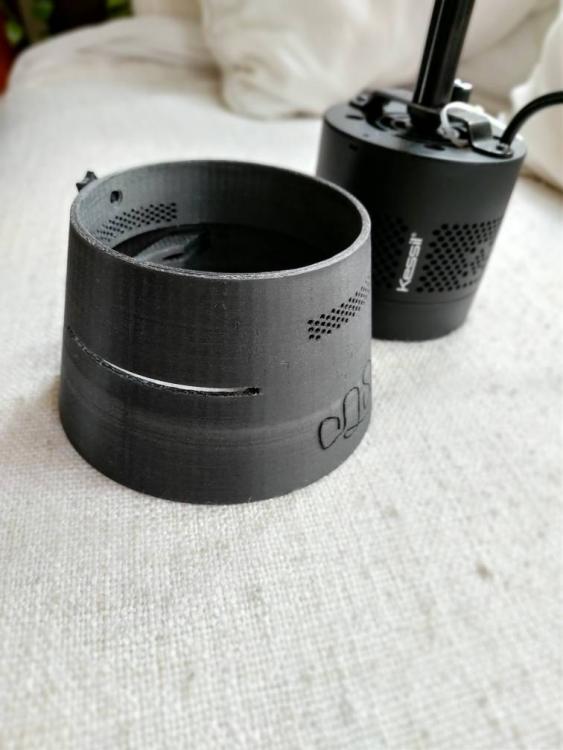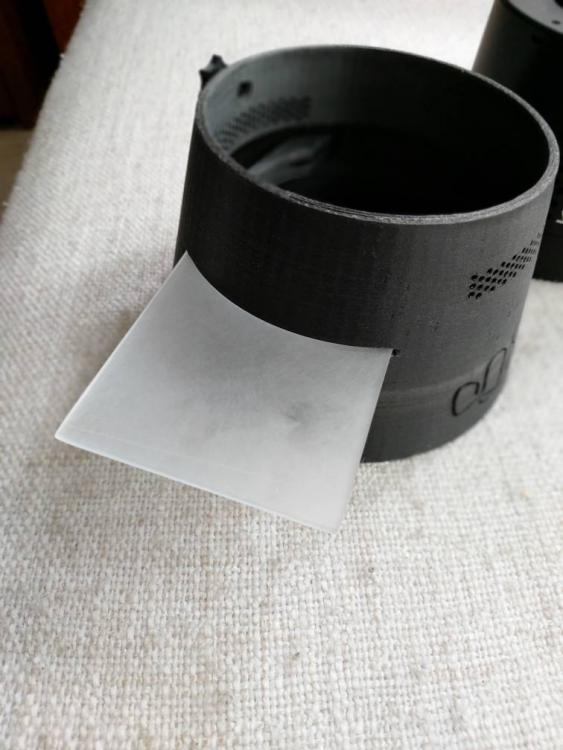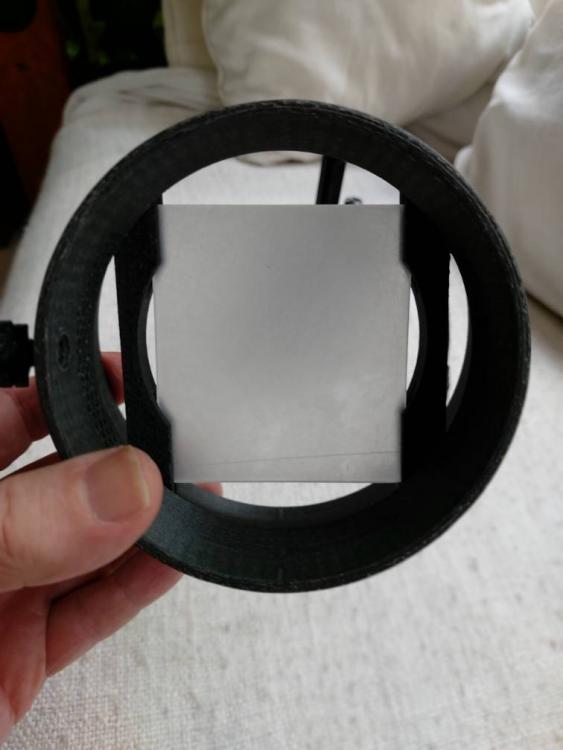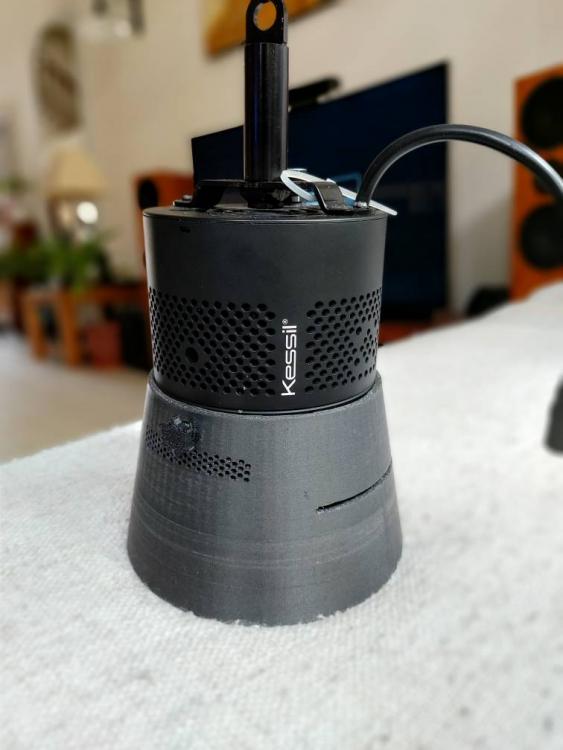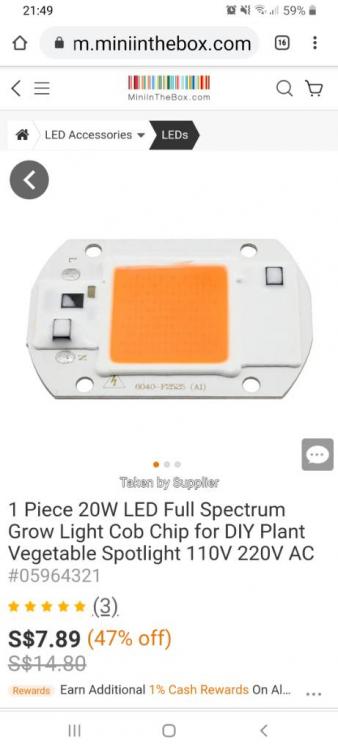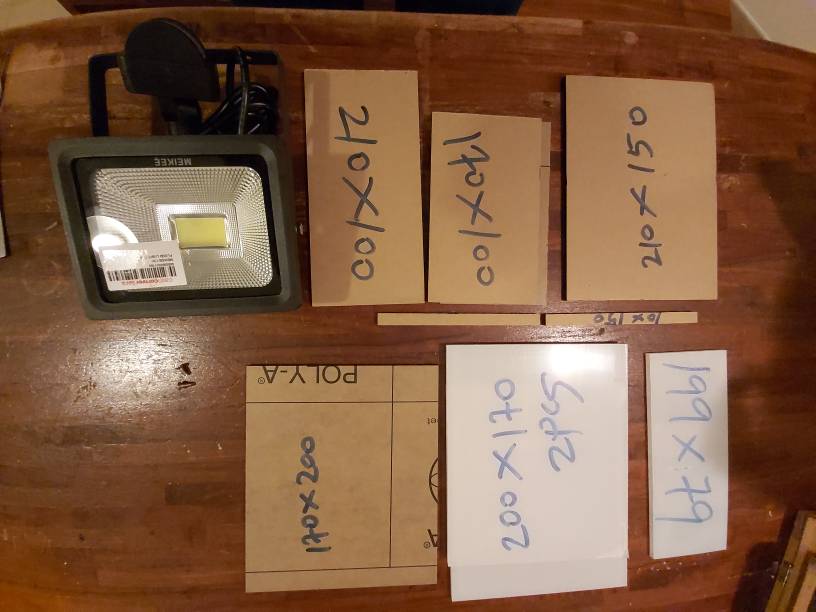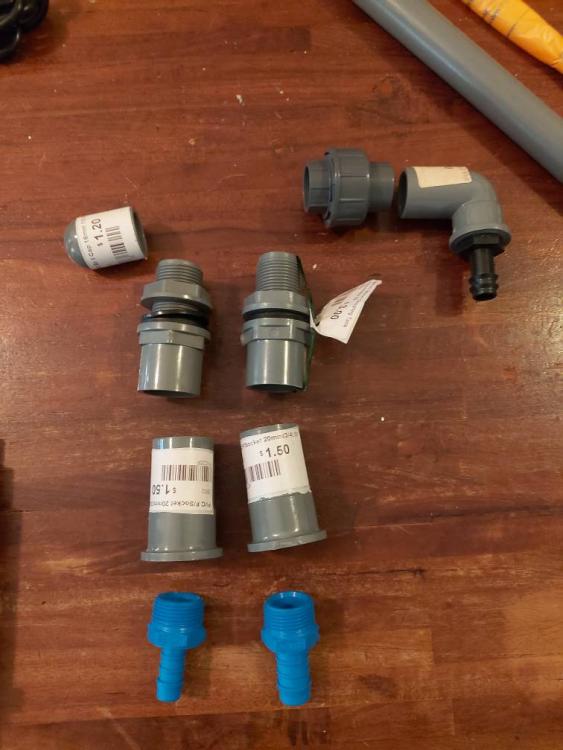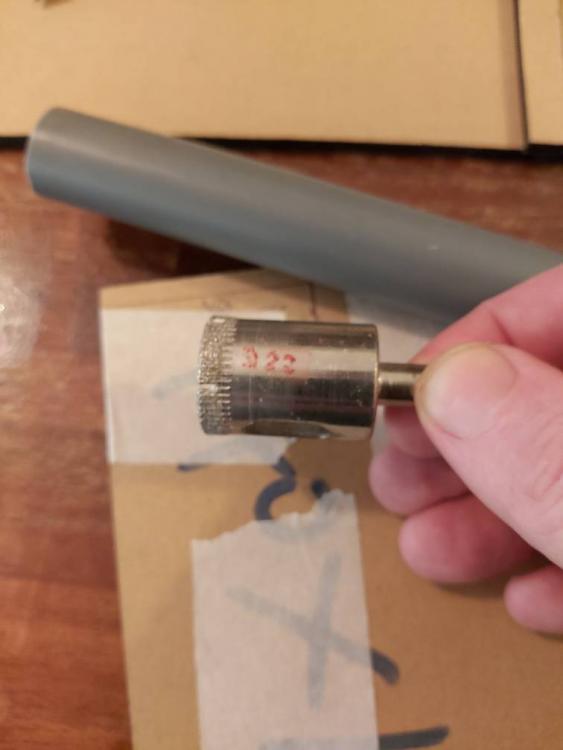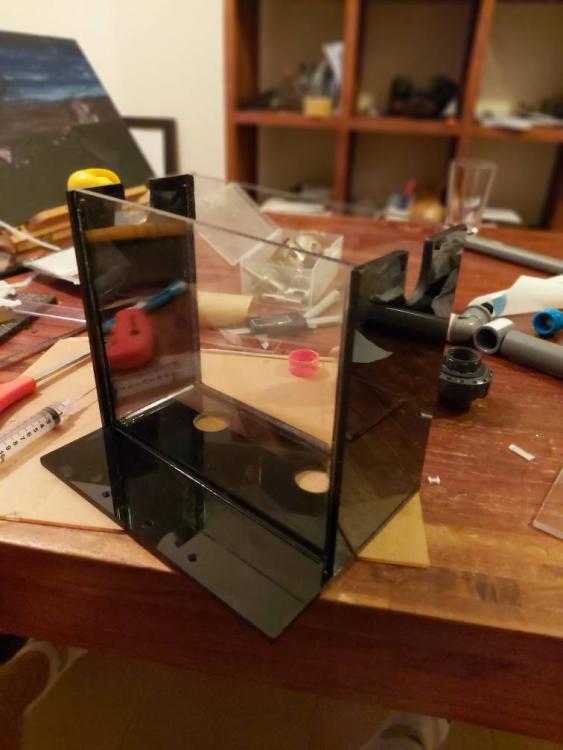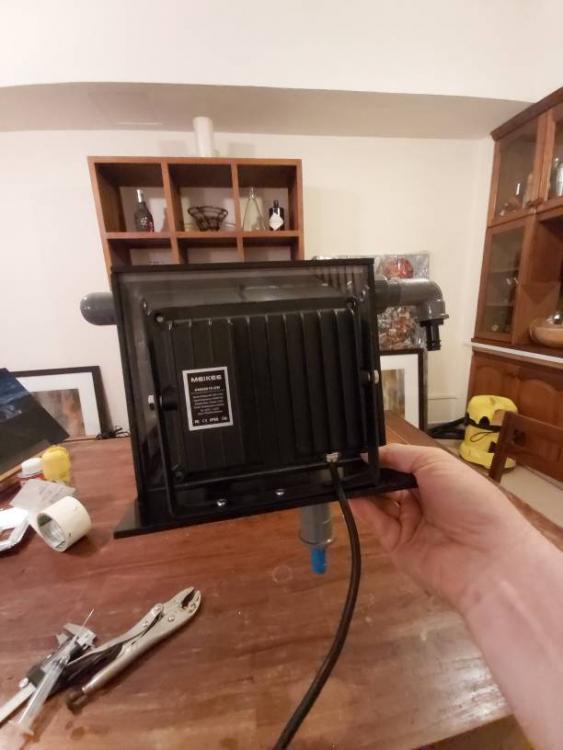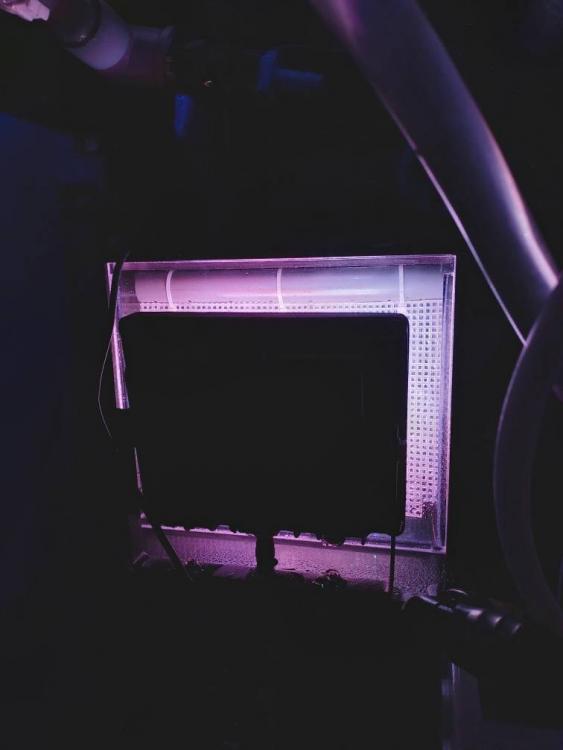-
Posts
313 -
Joined
-
Last visited
-
Days Won
25
Content Type
Profiles
Forums
Gallery
Everything posted by R0B
-
Copper in DT is traditionally regarded as a complete No No. Copper will kill invertebrates, beneficial bacteria, live corals etc etc... Copper likes to bind with calcium carbonate so all your rock and sand will continue to be toxic for a long time. Copper is absorbed by silicone so this also will continue to release toxins over time. BUT THERE IS HOPE! Despite it traditionally been seen as a no no, there is more evidence that it is indeed possible to keep a tank post copper exposure. (Even Mr Saltwater Tank confirmed this in his Q&A the other week). But it depends on how much copper you dosed and how long you dosed for (copper has a half life of around three days so overtime it will dissipate. But never go away completely) It also depends on what you did/do to flush the system if at all (carbon doesn't absorb copper directly, but may absorb organic compounds to which copper has bonded to). So can you keep coral?? Eventually YES you can, but that also depends on what your aims are for the tank going forward. Are you going to be able to have a show piece SPS tank with full ecosystem, super very unlikely. But you may get away with some hardy fish* and some zoas. The fact you are seeing some life is a good sign, but I wouldn't go crazy and pick up the latest jason fox coral just yet. This is what you can do... Run curpisorb and do a large water change, followed by regular large water changes to flush the system. Keep the curpisorb in place for a while, refreshing as needed. Going forward your bacteria may recover but in the mean time water changes are going to be your best friend. Up your mechanical filtration and gravel vac-ing. Keep your tank clean. *Also we are assuming that whatever killed the fish has been destroyed and isn't a factor going forward. I personally would start over get rid of all substrate and rocks, beneficial bio media, soak and wash all surfaces etc run cuprisorb on an empty tank, and do loads of water changes throwing in bacteria. But sometimes that isn't an option. Do way up the costs on both sides, you may find it cheaper to start over then to resurrect, but only you know your tank and can make that choice. Goodluck hope it works out for you. Sent from Singapore Reef Club mobile app
-

Cycling with Dr Tim ammonium chloride
R0B replied to Azil.HA's topic in New to the Marine Aquaria Hobby
Yes is weird. You should have between 2 and 3ppm ammonia by now. But as both@Indeco and I indicated above, testing ammonia is less important now, you should focus on nitrates (nitrite if you have the kit and want a little more info). Just wait, stuff is happening. So this is the initial cycle. Post this phase you should be thinking of adding a few fish. Clowns, then a six line, then a bristletooth Tang. Keep the lights off! Start your ATS (if you have one) as soon as you can. I would start to think about getting your tank stable. Get into a Rhythm (if your maintenace rhythm stays the same your numbers will stay the same). Good luck. Exciting times ahead! Sent from Singapore Reef Club mobile app -

Cycling with Dr Tim ammonium chloride
R0B replied to Azil.HA's topic in New to the Marine Aquaria Hobby
Yes, it should be enough. The Ammonia should start to zero out over the coming 5 days and then nitrites should spike and zero out over the following 8-10 days. If you are adding bacteria you can expect this to speed up substantially. But there is no reason to keep adding ammonia now you got to a good starting point. Typically, it is said that a cycle is finished when there is zero ammonia, zero nitrite and a modicum of nitrate. At that stage some reefers will take their tank for a 'test drive' once they see zero ammonia (and zero Nitrite and c.20 nitrate) by adding ammonia once more to the tank to get to 2ppm. The idea is that this will take just 24 hours to clear if the tank is fully cycled(0 NH3 and 0 NO2). Once this is done then you can add fish. Again this is all sped up with the use of bacteria! There are a few things you can do to help... keep salinity lower then normal as bacteria use more energy in more saline solutions. Keep water slightly warmer as it promotes bacterial multiplication. Oh and keep your lights off. Check out DR TIM HOVANEC's MACNA presentation on cycling your tank with bacteria. Hope this helps Sent from Singapore Reef Club mobile app -
(Jumping in). Not too difficult. Place in medium flow area, they don't need much light and feed reasonably regularily (vs. normal LPS). TIDAL GARDENS CARE TIPS Sent from Singapore Reef Club mobile app
-

Cycling with Dr Tim ammonium chloride
R0B replied to Azil.HA's topic in New to the Marine Aquaria Hobby
First off kudos for going the Dr Tim ammonium chloride route, you are on the right tracks. I would add in more ammonia, probably 128 to 200 drops as adding 64 drops and leaving it a day then adding in 128 the next day is not the same as adding 256 in one go as directed. Even in a new tank the ammonia will start to break down. So you have probably added in less then half of what you need. This is especially so if you have any live rock or sand in the system or added bacteria. It does warn you against going above 5ppm but that would take 540drops in your 64gal aquarium so you have a long way to go Regarding the test kit not showing. This is perplexing. Sadly hobby grade kits are not infallible and I have read of people thinking they have 1.5ppm when really it was 8ppm. Not sure if it's a testing error, a dud kit, or your tank simply had low levels of ammonia. However, irrespective of what the ammonia level is, given you will be adding ammonia it is the absence of nitrite and the production of nitrate that is of most interest. You are on the right tracks, just go for it. Personally I add in some more ammonia, wait a few days and see if Nitrite or even Nitrate is showing (NO3 normally after 5 days unless you adding bacteria). All the best. Keep us informed as to how it progresses. Sent from Singapore Reef Club mobile app -
Next project: 3D printed a shade for my KESSIL H380 out of some Carbon Fibre filament. I designed the shade to hold a little 2mm diffuser plate, which a little piece of clear polycarbonate I wet sanded. I used polycarbonate as it won't warp if it gets hot (unlike acrylic). The idea is that this helps reduce the light spilling over into the sump and reduces the intensity as so I dont destroy the macroalgae. I picked up the Ender 3, 3D printer at cash converters for just $39 Bargin!. I do have a few ideas on what to print next for the tank but happy to hear any suggestions?? Happy DIY reefing! Sent from Singapore Reef Club mobile app
-
Is a good point. I will spray the light body in an anti rust paint I have, but I agree it will no doubt eventually rust irrespective. What I could build is a polycarbonate box and effectively gut the light and place into that shell. You can actually just buy the compact leds.... mount them on an aluminium heat sink and add a computer fan for active cooling. Thanks. Sent from Singapore Reef Club mobile app
-
The light is IP65 rated. Which means it is suitable for outdoor usage (rain etc). Basically means it is protected against water splashes and spills. Sent from Singapore Reef Club mobile app
-
Since we are all safely quarantined at home I wonder what DIY projects my fellow reefers have been up to? To start you off I thought I would share my DIY ATS. I wanted a small ATS to fit on my sump and supplement a refugium and weight for weight an ATS will remove more nitrates. Here is the cut list...(pic1) 5mm Black Acrylic • 210mm x 200mm (qty 1 for base. Mine was 150mm wide as I only planned on using one light due to my needs) • 100mm x 170mm (qty 2 for sides) • 100mm x 210mm (qty 1 for lid) • 150mm x 10mm (qty 2 for support rails) 4.5mm polycarbonate solid clear transparent • 200mm x 170mm (qty 2 for windows) • 199mm x 79mm (qty 1 optional for lid) Cost of materials was around $25 from Dama. Sales@dama.com.sg (ask for Yuki) I also picked up a 20w grow light from shopee $19 each. Then I needed some plumbing (pic2) cost was around $20. For my design I was going to have the water drain down into sump, so I wanted two drainage holes. One would be for main drainage and the other will have a taller pipe inside for emergency drainage. Pics 3 shows the diamond drill bit I used to make the holes and pic 4 the construction of the base using acrylic glue. The light will sit on the lip and the tank connectors are used to screw into the base for drainage (you could always have it come out of a side wall) Pic 5 is final construction. I used a 16mm pipe for the spray bar. Drilled in a few holes and added some knitting material for the GHA to grow. Pic 6... that lovely pink glow! Hopefully the GHA will be growing soon. Hmmm just have to finish the tank now hahaha. Anyways, what have you reefers been upto in Circuit Breaker?? Sent from Singapore Reef Club mobile app
-
Tidal is certainly good. Would also recommend Fluval c2,3,4 Good luck with the nano, is certsinly very challenging. But if you get the reefing bug the nano can become your quarantine tank haha. Good luck! Feel free to reach out to the forum for any help you need. Sent from Singapore Reef Club mobile app
-
That is great. Can you tell more about your system, what filters and DI do you have? Sent from Singapore Reef Club mobile app
-
New control order: https://www.straitstimes.com/politics/parliament-private-social-gatherings-of-any-size-no-longer-allowed-under-proposed-law Looks like my coral addiction will have to be put on ice for a few weeks. Lets do our part. Safe and happy reefing everyone. Sent from Singapore Reef Club mobile app
-
What a great little add on. So simple. You could even run it against the side of a sump if you didn't have room. I like what@blueonblue suggested. You could paint the outside to avoid light spill depending on your needs and aesthetics. Do you have any baffle inplace to avoid little parts of the macroalgea escaping into the main display? Sent from Singapore Reef Club mobile app
-
Thanks for sharing! This is certainly a great start and so simple to set up (a tank, waterfall filter, some pvc drain pipe, a test kit and some medicines). For those that don't quarantine I would certainly look to set up a small system like he has (however don't add substrate but do add in an air stone as many medicines strip out oxygen). For more advanced quarantine methods and systems check out Humblefish on reef2reef. I wonder how many reefers here quarantine fish? Sent from Singapore Reef Club mobile app
-
(Copying previous post on the subject...) RODI systems first removes sediments, silt, clay... The carbon filter and RO membrane remove any unwanted chemicals like chlorine, chromium, pesticides. The DI resin typically focuses on the removal of heavy metals like copper. Combined they remove impurities, microorganisms, disinfection byproducts, inorganic chemicals, organic chemicals, and even naturally occuring radioactive nuclides! Now whilst Declorinated tap water is okay to use short term all the above elements even in extremely small ppm/ppb will build up over time (Silicone even absorbs heavy metals). This will start to cause issues for you. Tap water vs. RODI... imho It's the difference between breathing in the haze and clean fresh air. Both will keep me alive, but I know which one I would prefer. Sent from Singapore Reef Club mobile app
-
Yep is by Algea Free. They have a range; the Piranah, the hammerhead and the great white Haha, based on size and glass thickness. Certainly are awesome magnets for sure. Sent from Singapore Reef Club mobile app
-
Hi. No worries. Here to help. I am not familiar with seachem stability but I believe 7 days is typical usage. Low PH can be caused by carbon dioxide build up, so running skimmer is a good idea. Connecting the air hose to an outside source of air is even better. PH of 7.3 is still low. You want something in the range of 7.8 to 8.3. Remember PH is a logarithmic scale so the difference between a PH of 7.3 and a PH of 8.3 is ten times! Remember the key here is stability versus chasing an actual number. Although 7.3 is still very low! so if cycle complete yes you could use a buffer and add a fish. If water parameters are ok then sure nothing stopping you. Just go slowly. But know is not permanent solution. What I dont understand is if you did a 100% water change why your ph would not go up to the more accepted levels? Isn't that easier? Anyways I think you are making good progress and asking all the right questions. Keep it up the good work. Looking forward to seeing the tank up and running well. Sent from Singapore Reef Club mobile app
-
I have used both the flipper and tunze. Flipper is no doubt a really really really good magnet. I ended up just using the smoth scraper side and not the scratch and go side so kinda didn't get the full benefit. However, over time I started using the tunze more and more because of the double sided scraper action. Which allowed me to navigate more easily around my mp40's. Plus I never had any issue with scratching which I did with the flipper (user error). Now, I know tunze has just come out with a grip and float system that can clip onto the tunze magnet making it easier to use. Not sure when that will hit the singapore market. Now for the hijacking part.... the best magnet I have both form a usability and an aesthetic point of view (imho) is a piranha float magnet. I just like that wooden grip as it contrasts against the clean lines of the tank. Now a magnet I wish I had purchased and regret not getting it when I saw one was a COVE magnet. Just some other options for you. Haha. Hope that helps. Sent from Singapore Reef Club mobile app
-
If the machine used to produce 0 TDS and is now producing 1-3 TDS this is a sign of needing to replace your resin and/or filters. If you never had zero TDS it may mean your system is not optimal. In reality a five stage system should be getting 0 tds. All in all 2 TDS isn't something to keep you up at night in the short term but it could become an issue in long term depending on what that '2' is.. for example if it is a heavy metal, then over time this could cause algea or other more dire issues the longer you leave this unresolved. So you shouldn't worry too much, but dont ignore it either. I found adding more stages doesn't typcially rectify the situation (I have 7 stage system) so dont spend the money here. (That is more about specialist needs). What does matter is the quality of components. So focus on getting the best filters. Note I find the carbon filters commonly available in local LFS's to be designed for drinking water (coconut carbon) and not completely optimal. (LFS's please carry GE filters) But there are other factors. here are just a few.... water pressure not enough for RO membrane, water volume not regulated correctly. Bad quality filters. Filters are simply old and need replacing. Not flushing filters long enough, Filter body not cleaned correctly, filters not installed correctly, DI resin got damp in storage (reason never to buy second hand DI resin), DI resin not packed sufficently/correctly, water channels in DI resin. TDS probe quality. Many factors. Maybe one or two of these ring true for you. Hope it helps. Sent from Singapore Reef Club mobile app
-
Agreed. If your RODI is producing 0 TDS then either you meter is reading an error (test it on some distilled water or RODI), or as@marcel says your barrel is contaminated. Interesting as Singapore has very good quality water. Mine reads 68 out of the tap. So to get a reading of 200+ would mean something was added. Has any of the containers been cleaned lately? are they covered or open to air borne pollutants? Have they had salt in them? If used for salt mixing then some salt residue could be skewing your results. I suggest you wash them out with the zero TDS water and throughly dry them. Add some clean rodi to the barrel and retest every hours or so, if the TDS starts to go up then your barrel is leaching something. Hope this helps. Sent from Singapore Reef Club mobile app
-
I believe your issue is not one of PH problems per se, but rather one of a small mistake and a heavy hand haha. So you will be good to go once the cycle is complete. Is interesting concept to add coral chips. Not a bad idea but I would argue this has a very minimal impact at 7.3ph and personally would not recommend adding coral chips to a sump for a long term. Sumps IMHO should be super clean so if you add, throw them in a filter bag or better a recirculating reactor (which I dont think is possible in a IOS). Whilst this may buffer PH moderately this takes a long time as normal salt water PH levels don't cause the chemical reactions needed (or they happen much much slower). Adding coral chips was a trick fresh water hobbiests used to buffer PH, but their PH is typically more acidic then in saltwater tanks. It is not a bad idea whilst the ph was below 7. Within the salt water hobby coral chips are sometimes used in recirculating reactors (such as a nitrate reactor) this is because there is an increased dwell time and the PH is artificially low compared to the tank. I do very much agree that having surface area on which to promote bacteria is a really good idea so do think about that. I would not add a clean up crew at this stage. Wait for your tank to be established. Else they will starve and in doing so they will begin to consume their own flesh leaching toxins. I would possibly wait a month after adding your first fish before adding a clean up crew (not including fish clean up crews like tangs and blenny). So what can you be doing? What I would do is keep the lights off and think about your fish selection (and the order of fish introduction). Add slowly once your INITIAL cycle has completed. Then get into a maintenance/testing rhythm. All the best. Sent from Singapore Reef Club mobile app
-
Yes the ATO is the auto top up. A Tunze 'nano' is a good option for small tanks. Until the time you get a system then you can top up manually with a glass of rodi water. Just figure out how much evaporates on a daily basis and replace the same accordingly If you have room you may want to pick up a reactor, either two little fishes or IM minimax would do well. That would allow you to run carbon and a phosphate remover. Until then media bags are fine. Suggest you replace your carbon reasonably regularily (say every two weeks). As your corals grow you will need to think about supplementing. I suggest you look into Tropic Marin 'all for Reef' as this contains both Calcium and Alk along with trace elements all in one bottle... easy. Hope that helps. Sent from Singapore Reef Club mobile app
-
You look to have a great little tank. So assuming tank was all properly cycled. I would focus on four areas... 1. ATO to keep salinity in check, refractometer to check levels... those hanna pens are awesome as can check day or night and they adjust for temperature. Which leads me to 2. Temperature control. A small chiller is ideal 3. A few test kits (nitrate, phospate and alkalinity are key) and 4. Filtration. Both ATO and chiller are simple plug and play options... so let's focus here on filtration given you have a big bio load (i would actually say too big but that is just my opinion. However you have the fish now so let's help you make the best tank possible). So unless you plan loads of water changes (this is not a bad option btw) you would need ; A) mechanical filtration. An ability to remove organics (assume you have some filter floss in AIO), a skimmer (tunze comline 9004 is great skimmer for small tanks. a chemical method to clean out undesirable elements (chemipure, carbon... either in a bag or a small reactor (IM minimax reactor would be good)) C) Biological filtration. I am a big fan of an ATS!! Plus some bio bricks. all this costs a fair bit, hence water changes are actually a reasonable option on a small tank at the start. Eventually you will need a plan to move those Tangs to a larger tank in the future but if they are small specimens (as or photo) enjoy them while you can. Tangs are great utility fish and will help keep the algea down (two tangs in a small space is challenging, as they grow bigger they tend to get more aggressive/territorial... which means you will need to feed more to temper this (hence you need top notch filtration and/or maintence). Unless you quarantined the fish (sadly few LFS quarantine fish) you will need to read up on ICH management techniques, no biggy but best to be prepared. Good luck. What a great start you have made. Keep up with the water changed and keep those nitrates low. Haha. Sent from Singapore Reef Club mobile app
-
Nothing good happens quickly... Cycling is about getting the correct balance of bacteria. Bacteria lives on the surfaces of rocks, substrate even filter pads and a little on the glass, Little is found in the water column itself. So you could do a more aggressive water change (even a 100% water change as you have no live stock in the tank). If the ph dropped below 7 there is a chance that you may have killed off some of the beneficial bacteria, "stalling" (slowing) your cycle. Only way to tell is to test. If you were keeping track of your Ammonia and Nitrites before the incident you should be able to tell where you are. Either way just be patient. Ph of 7.3 isn't great for livestock nor bacteria, but it isn't the end of the world either and they will still be alive, just not optimised so the cycle may take longer. Not sure if you were/are still feeding ammonia, or what stage you were at in the cycle... If you want to test your cycle is complete, add 2ppm Ammonia chloride (freshnmarine sell it). Your tank should be able to clear that, reducing both Ammonia and Nitrite to zero, in 24hrs. If you want to boost the cycle you can add bacteria... the likes of Dr Tim's One and Only or Frtizyme 9 (PM@marineplanet as he had some for sale at a good price) We all make mistakes so no big deal. A few water changes and you will be back on track. Good luck! Sent from Singapore Reef Club mobile app
-
Woo nice. Expecting good things to happen in that box of water HAHA. no pressure [emoji28] Sent from Singapore Reef Club mobile app



